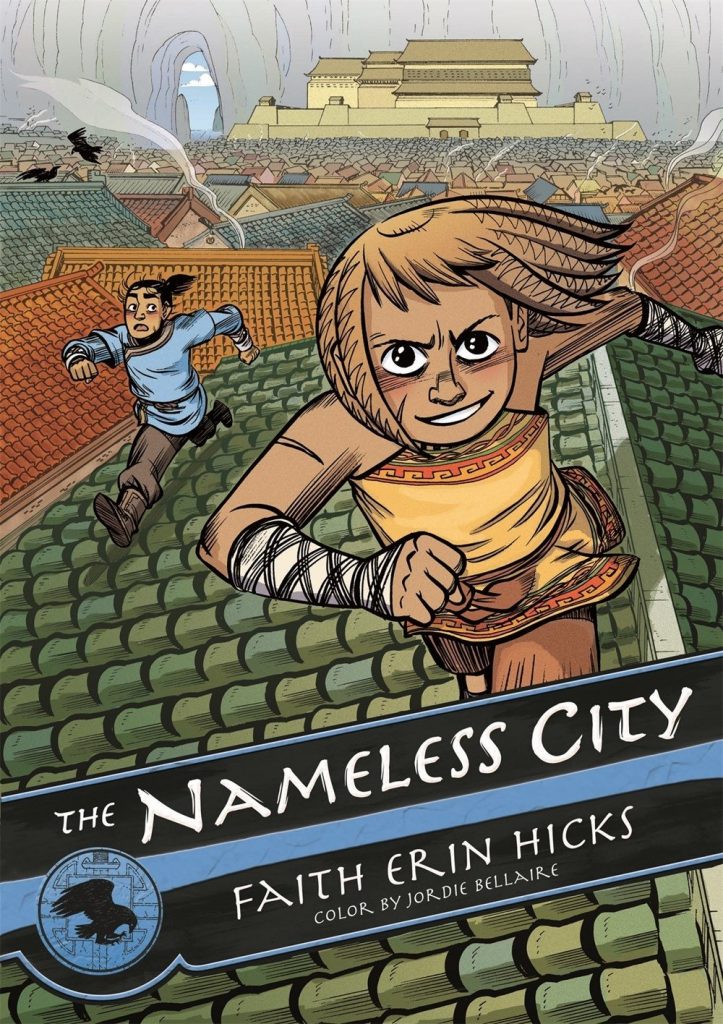
Cora McClain | Copy Editor
“All called the City their home. And who could say that any of them were wrong?” This text ends the introductory panels of “The Stone Heart,” the second of the “Nameless City” graphic novel trilogy. Those two panels illustrate the core theme author Faith Erin Hicks explores — identity.
The story follows Kaidu, a young boy from the warrior nation occupying the Nameless City. Along the way he makes an unlikely friend in a girl named Rat who was born in the city and orphaned by the occupying forces as a young child. With the city as their backdrop, our two protagonists explore what it means to identify with a people while stumbling onto a nefarious plot to overthrow and destroy the city.
While the plot and villains introduced in the second and third books might fall a bit flat for me, the cultural tension which sparks the plot is far more interesting. It’s a bit uncanny to see a city filled with all sorts of different people from many different nations look at an individual and judge them solely on the nation they belong to. Kaidu’s nation even has a word for people who are not of the nation, literally meaning they are not a person. Let’s just say Hicks is pretty heavy-handed with getting her message across.
Regardless of the thick metaphors, exploring identity on the basis of nationality and where a person is born allows for a juxtaposition with the world outside of the pages of the books. Meant for young teens, the trilogy does its job of trying to show the reader inconsistencies in that sort of judgement. However, I think the first book “The Nameless City” does that better alone, whereas the two others just complicate the message with the introduction of “dangerous knowledge plot device” and villains whose motives are not clearly set from the beginning. The one saving grace would be the satisfactory ending that leaves no loose ends.
Besides my obvious contempt for the overarching plot, the artstyle and fluid action scenes are glorious. Invoking an artstyle similar to “Avatar the Last Airbender,” with thick expressive lines and facial expressions, there was never a moment when I wasn’t absorbed in the colorful world of “The Nameless City.”
Altogether, I don’t hate the trilogy, but I appreciate “The Nameless City” as a standalone novel far more than the addition of the other two books and their shaky plotline. It just kind of feels like there’s a disconnect from the first novel and the other two, and I enjoyed the complexities, characters and plot of the former over the latter.
Overall Rating: I would recommend “The Nameless City” for anyone, especially as an introduction to graphic novels or comics. I would suggest only reading the rest of the trilogy if you want to learn more about the City Builders.
Contact the author at howlcopyeditor@wou.edu
Photo courtesy of us.macmillan.com

